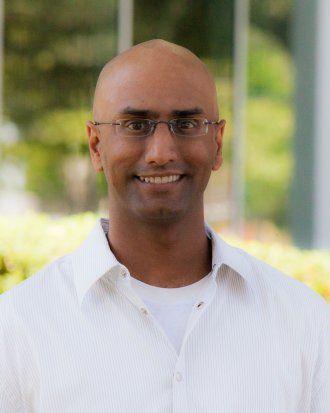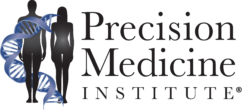Leaders at the health system recognized the benefits of having an experienced biobanking expert at the helm, including cutting-edge research, engaged consumers, and a potential path to funding-all ultimately advancing the promise of precision medicine and improved outcomes
As hospital and health system leaders face the challenge of improving patient outcomes in the face of shrinking budgets, the smartest ones are placing early bets on biobanking programs. Why? Because biobanks have the potential to fuel pioneering research that can lead to tomorrow’s cures. The University of California San Francisco (UCSF) has joined in, naming Rohit Gupta its first Chief Biobank Officer.
Other benefits that hospital and health system executives can reap by giving critical thought to and implementing a tissue biobank:
- It creates a powerful opportunity to attract patients. “The value-add in building out a biobank that’s done properly is that patients getting involved with research feel like they’re contributing to [a] better tomorrow in some capacity,” Gupta says. “And community hospitals may choose to promote that idea.” This is important in an age when consumers hold stronger hands and can choose where they receive care.
- The best interests of hospitals, health systems, and other stakeholders are served if physicians participate in research, physician-scientists wrote recently in The New York Times. “Science is becoming more relevant to medical practice with the emergence of innovations like precision medicine, which requires a detailed understanding of disease mechanisms and genetic data in order to determine the best treatment for each individual patient. More than ever, we need doctors who are competent at both the lab bench and the hospital bedside.”
- Potential sponsors, medical research grants, and healthcare industry partnerships await. Quality samples, a data center, and patient populations are attractive to those exploring the next big drug discovery.
Shifting from Freezer Farms to the New Biobank Landscape
Historically, biobanks were synonymous with freezer farms, explains Gupta, where biomaterial was stored and locked for archival purposes. “For decades and decades, that’s the way it was-archives of samples locked up for a rainy day. And no one was really able to tap into them in a very intuitive, self-service based way,” he says.
That is changing, and savvy hospital and health system executives are taking notice. Biobanks are beginning to more closely resemble public libraries than armored vaults, notes Gupta.
The shift is welcome, given how challenging it can be to reproduce research results. An estimated $28 billion a year is spent on life scientific research that cannot be replicated, according to PLOS Biology. Research is often released without being verified mainly because such research takes time, is expensive, and is hampered by challenges tied to study design, biological samples, lab protocols, and data analysis.
This leads to implementation of clinical protocols based on potentially weak data that has not been corroborated. Witness clinical guidelines replete with recommendations based on “expert opinion” rather than validated scientific evidence. This ultimately leads to less predictable outcomes that hospitals and health systems are being graded on.
Hospital and health system leaders at UCSF recognize this and have brought in Gupta to lead the charge (i.e., optimize costs and improve outcomes). Gupta previously led the Stanford Biobank, where he combatted the cultural tendency for researchers to “hoard” samples, and educated and engaged the public to beef up participation.

“The value-add in building out a biobank that’s done properly is that patients getting involved with research feel like they’re contributing to [a] better tomorrow in some capacity,” says Rohit Gupta, University of California San Francisco‘s new Chief Biobank Officer. “Community hospitals want to promote that idea.” This is important in an age when consumers hold stronger hands and can choose where they receive care. (Photo courtesy of UCSF)
What Happens to Biomaterial? Getting the Public to Buy into Biobanking
Progress on both fronts requires well-thought-out mechanisms for collaboration, so individuals can share the de-identified data that they want to share-and only that data. Gupta says it’s important for the public to understand that, even if patients do agree to share their de-identified data, the university will not share any personally identifiable data with industry through the biobank.
“If we don’t start collaborating and opening the door to really working together, we’re going to miss this opportunity,” Gupta says. “I find that when [researchers and patients] are properly engaged-they still get to govern their samples-they will embrace having mechanisms to share it.”
Gupta continues: “When I think about what we’re doing and all the great work and science that is going on, it is making sure that people are getting acknowledged for the work they put into getting the samples and doing the research.”
Annotations a Critical Issue with the Modern Biobank
Gupta says success will also require annotating both existing and new samples with clinical and biological data to help promote visibility and collaboration with the research community.
Such a “technology toolkit” can enable researchers to seamlessly sync and analyze the data from their experiment. Once published, this can be shared through an online portal for further interrogation and innovation. The UK Biobank and the National Institutes of Health’s All of Us projects are being built using the same philosophy.
Among the many issues of biobanking, Gupta is keenly focused on the IT side, specifically around linking samples to all of their associated data, from sample collection to how the sample is used for research.
With the older biobank model, sample collections were akin to volumes of books filled with only partial parts of the story. But as a sample is brought into the research setting, modern biobanks must advocate that the specimen’s story be fully captured. UCSF is leading the buildout of its knowledge network which includes the samples associated with de-identified medical information and the results from experiments.
“All of that meta-information on that sample needs to stay annotated to that sample,” Gupta says. “And then in parallel, we’re also going to look at how we consume that sample in experiments. We’re [working on] tracking both the physical and virtual chain of custody the whole way through.”
Gupta and his team are currently developing a digital crosswalk that will enable specimens and the data they contain to be captured seamlessly by each investigator at the benchside. “It also will enable the research scientist to have more of a digital infrastructure to track their work at the benchside, so we can have the data files and all the information they produced link back in the system.
Growth of Biobank Market and Meeting Patient Expectations
Gupta’s appointment as UCSF’s inaugural chief biobank officer is indicative of how institutions view their biobanks as expansive, high-impact infrastructure.
Hospital and health system leaders who want to gauge the potential growth of the biobank market need look no further than the investment community. In a September 2018 report, Grand View Research estimated the total global biobank market size to be more than $52 billion in 2017, with an estimated compound annual growth rate of 4.5% through 2025. A report released in September 2019 by Transparency Market Research estimates the global tissue banking market will grow to nearly $3 billion by 2026, up from $162 million in 2017. The report cites “increasing demand for regenerative medicines, advancements in biobanking technology, increasing healthcare expenditure, and rising awareness” as the main reasons.
People who donate their biomaterial to science also want to know that their samples are being used and receive some form of results. Providing a central portal to highlight publications and findings from research studies that utilize the biobank will help foster engagement with the larger community, Gupta says. “They want to know that their participation is leading to something.”
Additionally, given the complexity of the science and increasing demand for biobank experts, masters- and doctorate-level degree programs are becoming more commonplace globally, Gupta adds.
“The modern era is really demanding biobank experts being more ingrained in the research community, especially when it comes to clinical and translational research and precision medicine,” says Gupta. “It requires people who understand this domain.”
-Debra A. Shute
Related Information:
About the UCSF Biospecimen Resources (BIOS) Program
UCSF Names First-Ever Chief Biobank Officer
1,500 Scientists Lift the Lid on Reproducibility
We Need More Doctors Who Are Scientists
The Economics of Reproducibility in Preclinical Research
How Biobanks Can Help Improve the Integrity of Scientific Research
Biobanks Market Size, Share & Trends Analysis Report
Tissue Banking Market: Are Expected to Offer Promising Growth Opportunities for The Market Players
